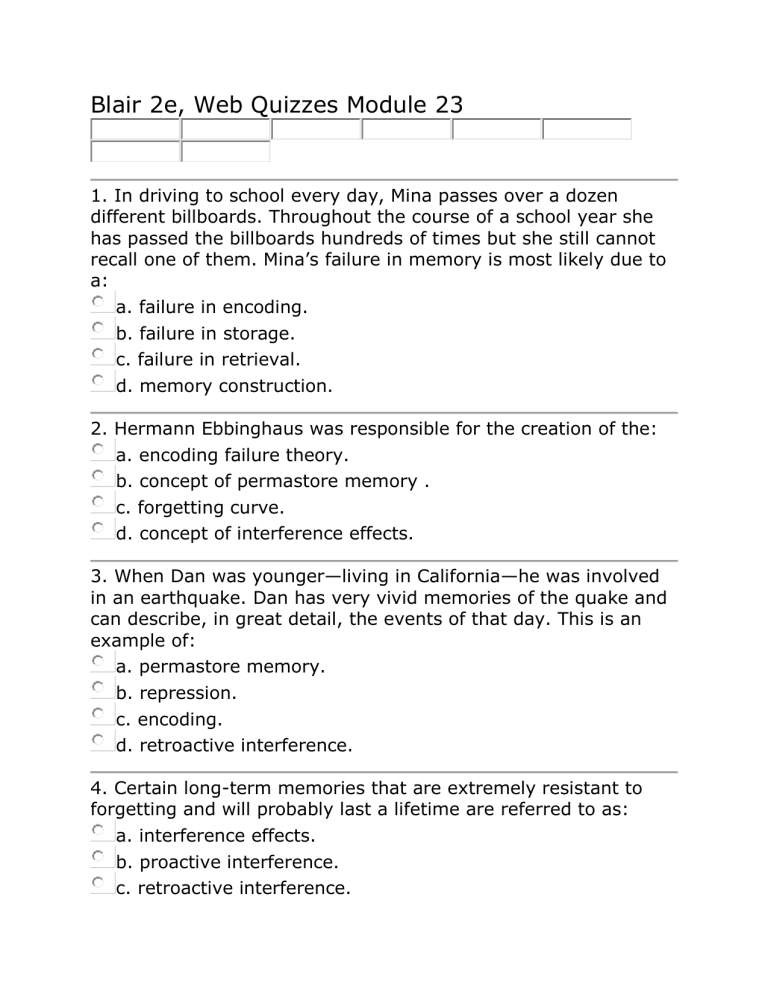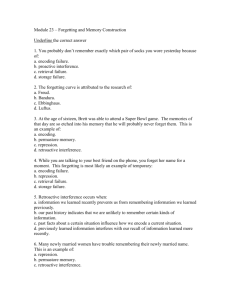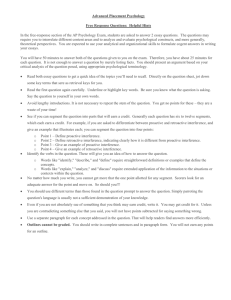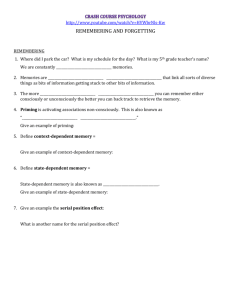Extra Credit Quiz #23

Blair 2e, Web Quizzes Module 23
1. In driving to school every day, Mina passes over a dozen different billboards. Throughout the course of a school year she has passed the billboards hundreds of times but she still cannot recall one of them. Mina’s failure in memory is most likely due to a: a. failure in encoding. b. failure in storage. c. failure in retrieval. d. memory construction.
2. Hermann Ebbinghaus was responsible for the creation of the: a. encoding failure theory. b. concept of permastore memory . c. forgetting curve. d. concept of interference effects.
3. When Dan was younger—living in California—he was involved in an earthquake. Dan has very vivid memories of the quake and can describe, in great detail, the events of that day. This is an example of: a. permastore memory. b. repression. c. encoding. d. retroactive interference.
4. Certain long-term memories that are extremely resistant to forgetting and will probably last a lifetime are referred to as: a. interference effects. b. proactive interference. c. retroactive interference.
d. permastore memory.
5. A common difficulty for newly married women is remembering to sign their married name. The problem is a result of: a. proactive interference. b. repression. c. retroactive interference. d. inattention.
6. Trent is in a psychology class first period, followed by sociology second period. Trent keeps finding it difficult to remember his psychology concepts because he keeps confusing them with his sociology concepts. This is an example of: a. proactive interference. b. Ebbinghaus curve. c. permastore memory. d. retroactive interference.
7. The unconscious process of making memories inaccessible to recall is called: a. motivated forgetting. b. inhibition. c. transfer. d. relearning.
8. Which psychological theorists developed the idea of repression? a. Loftus b. Freud c. Ebbinghaus
d. Skinner
9. You are involved in a traumatic accident and later cannot remember what happened to you immediately prior to the accident. This is an example of: a. retroactive interference. b. repression. c. proactive interference. d. inattention.
10. In Elizabeth Loftus’ study on a car crash memory, one group was asked how fast the cars were going when they “smashed” into each other. This group was more likely to report: a. the incorrect color of each car. b. the drivers of the cars were both teens. c. broken glass at the scene. d. that one or both cars went through a stop sign.
11. Oftentimes attorneys will lead someone testifying at a trial by trying to provide misleading information into a memory. This technique would follow Elizabeth Loftus’ concept of: a. repression. b. misinformation effect. c. permastore memory. d. retroactive interference.
12. Which of the following is an example of memory construction? a. proactive interference b. retroactive interference c. repression
d. misinformation effect
13. Which of the following is a theory on why children construct false memories? a. the desire to please adults b. proactive interference c. interference effects d. permastore memory
14. When asking children to reconstruct memories, it is important that, according to our textbook, the interviewing adult do which of the following? a. phrase questions using words children understand b. do not contact the child before the investigation c. use neutral language d. all of the above
15. According to the section in our textbook, research shows that childhood memories of abuse: a. can be repressed. b. can always be recovered if they become repressed. c. cannot be influenced by the interviewer. d. are always accurate.








